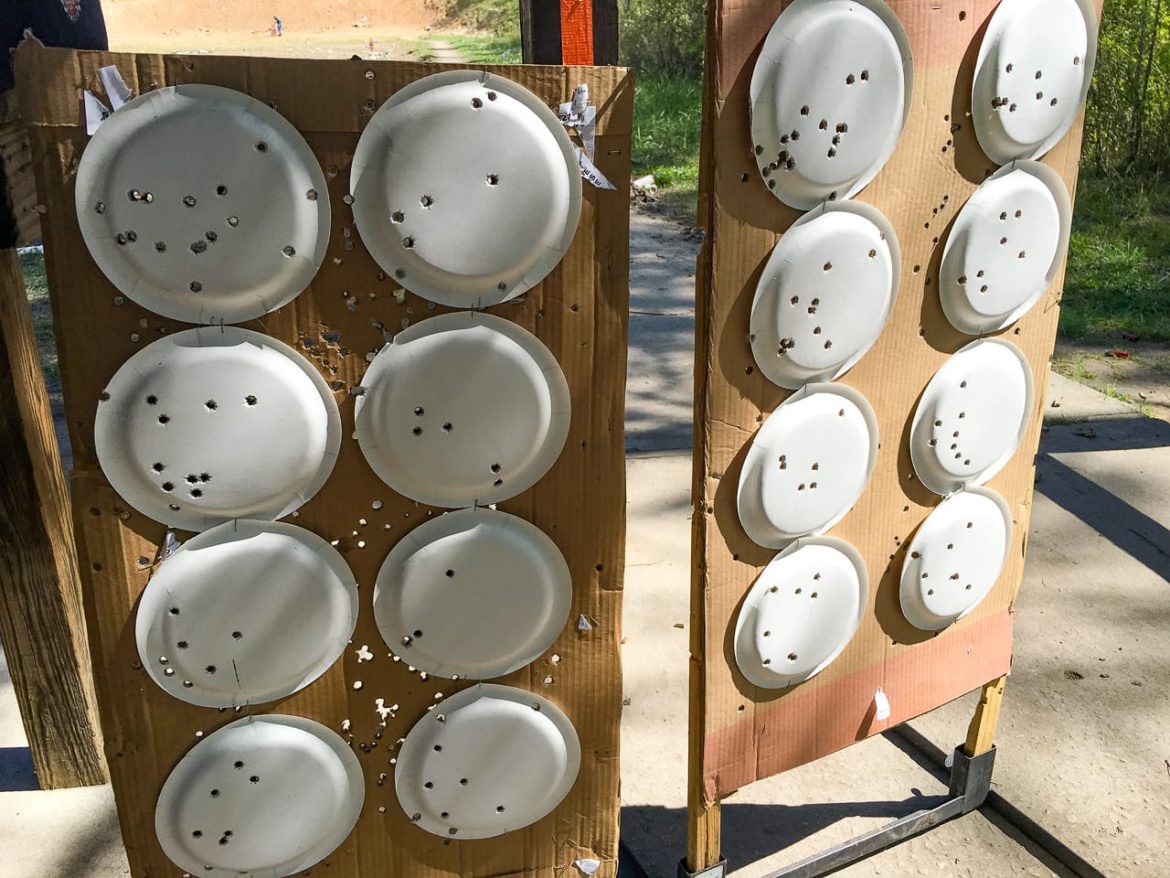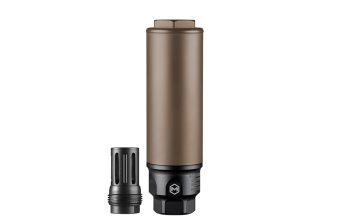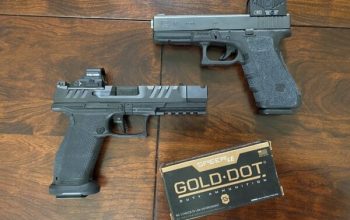I may or may not have a touch of OCD in my genetic makeup.
Hypothetically speaking, if I arrange my boxes of ammo on the shelf by lot order, would that qualify? How about if I have to reset things when the “wrong” one of the two same-circuit light switches in my office is “up” when the light should be “off?” Don’t get me started with the focus-robbing chaos that ensues when my two aviation instrument drink coasters are in the wrong place on my desk…
There’s also an OCD range habit I have to actively resist: Shooting tiny groups.
Yes, you heard that right. “But wait,” you ask, “isn’t the goal of master-level pistol shooting being able to shoot tiny groups at 300 yards on demand?” Well, yes. Sometimes.
If you’re a trick shot YouTube star like 22 Plinkster, then yes, you want to be able to shoot tiny groups.
If you compete in NRA Bullseye competition or have plans to attend the Civilian Marksmanship Program National Matches, then yes, small groups are your friend.
Maybe you require a steady diet of Squirrel Wellington and need to make precise shots. OK, that’s another good reason to practice shooting tiny and precise groups.
Perhaps you’re using itty-bitty groups as a measurement of a fundamentals practice session. If you are spending a range visit working on your smooth trigger press technique, then group size is a great indicator of your success or failure.
Last but not least is bragging rights. Admit it, we all want range neighbors to look into our lane and see us nailing dimes at 20 yards with ease.
Here’s the gotcha. If you use a gun for concealed carry or home defense, tiny groups are not your friend.
Several years ago, I enrolled in an advanced concealed carry class with my wife and some family friends. Most of the curriculum involved range work with an emphasis on drawing and getting shots on target quickly, drawing while getting off the X, shooting while moving, creating distance from the threat, and putting shots on target until the threat was neutralized.
Without consciously knowing what I was doing, I was putting my shots on the “bad guy” silhouette targets in a nifty and impressive little cluster on the target. If I’m to be completely honest with myself, I suspect there was some of the last reason in play. You know, shooting tiny groups to impress other nearby shooters and in this case, the training staff.
Anyway, my results drew the attention of the primary instructor. As he approached me, wearing a wide grin, I mentally rehearsed what type of sincerely humble response I would give to the praise and recognition sure to come my way.
Instead of calling me out and telling the rest of the class what a tactical ninja I was, he proceeded to run me through some command drills.
“Shoot twice and re-holster!”
“Drop that mag! It’s jammed! Now fire three times at each target!”
“Switch hands and keep shooting!”
“You have a malfunction, clear it now! No, now!!!”
“You’re dead!”
“Stop shooting, a bystander just popped up behind your target!”
“Two to the torso! That didn’t work, one to the head!”
You get the idea. He issued a flood of commands in such a fast and furious manner that within seconds I was fumbling all over the place to the point of ejecting live rounds, missing shots, dropping perfectly good magazines, and generally bringing shame to all descendants of the late Colonel Jeff Cooper and his orchestra.
My instructor wasn’t being a jerk, he was making a point, and a valuable one at that. I wasn’t at that class to work on my NRA Precision Pistol scores, I was there to learn how to use a pistol defensively. They are very, very different things.
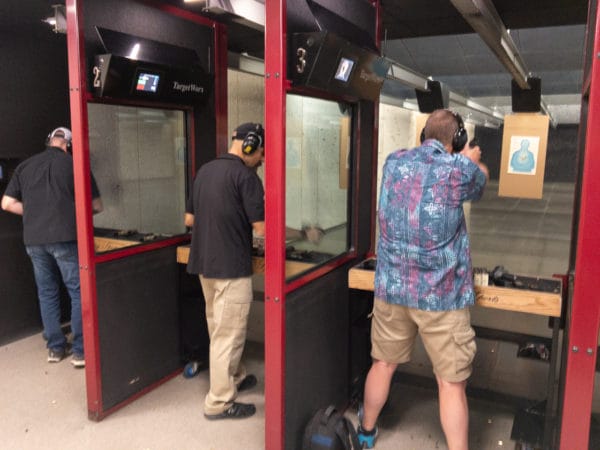
One of the skills you need to master in defensive shooting is getting shots on target—fast—under exceptionally adverse conditions. Standing at the shooting line, taking shots at a stationary target in such a leisurely way as to print tiny groups isn’t likely to help you learn those skills. In a defensive situation, you’re not likely to bring your sights on target once, then take multiple shots at the same bullseye whole both you and the target are planted firmly into fixed locations.
Once that instructor made his not-so-subtle point, he offered up some alternative ways for me to shoot. To break some “tiny group” habits, he had me fire multiple shots with each impacting a different point on the silhouette target. For example, the first shot might be in the pelvic area, the second center mass, and the third high center mass. The “groups” looked like hell, but the target was well perforated and if it had been a determined assailant, the variety of shot placement had much better odds of stopping his attack quickly and decisively.
Anyway, the experience got me thinking. While it’s still fun to go to the range and try to nail tiny targets (I still do that on occasion) I spend far more time working on more realistic defensive shooting skills, even though the results don’t look nearly as impressive on target.
So how have I changed my practice routines and casual range time? Here are some things that help me. While mileage varies for all of us, maybe some of these methods will help you too.
Lose the Pride
Yeah, I know it’s hard, but try not to think about how your targets look in comparison to your range neighbor’s. Accept that your groups will be larger and that they won’t be impressed with your skill. Know that you’re the one who’s actually working on valuable techniques and be quietly confident in that. If you want to improve your defensive skills, work on getting shots on target from the draw or low ready position if your range doesn’t allow draws. If your shots are landing in small clusters, your either really, really good or you’re shooting too slow. That brings us to the next point.
Shoot Faster
With the caveat of safety first, meaning never shoot faster than your ability to be safe and control each and every shot, push yourself a bit. Action pistol competitors do this all the time. If you can get every shot into a paper plate sized target at 10 yards, increase your speed until you start to get some misses. When you start to get all those in a target circle, increase your speed again.
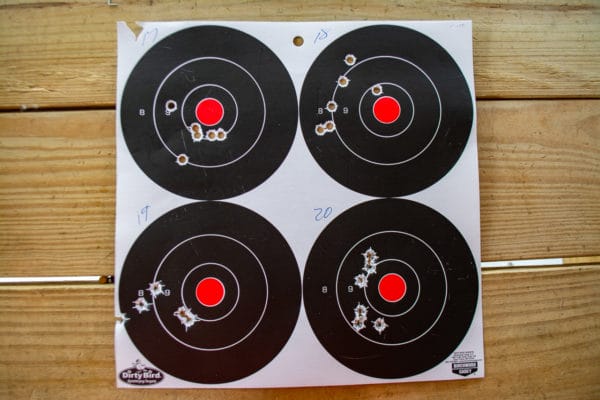
Be sure to work on two different elements of speed. First, push the time you take to get your sights on target and release an aimed shot. Second, work on the “split” or time between aimed shots. Both are skills that only improve with practice.
Live Inventory Price Checker
Use Paper Plates for Targets
Forget the quarter-sized bullseye in your targets. Instead, focus on getting shots inside of a reasonably sized circle. I like to use six-inch Birchwood Casey Dirty Bird Targets or even paper plates. I don’t go for groups; I go for all shots in the circle—somewhere. One benefit to the paper plate approach is that there is no distinct aiming point—the target area is a bit ambiguous. That’s OK. Self-defense targets are ambiguous too.
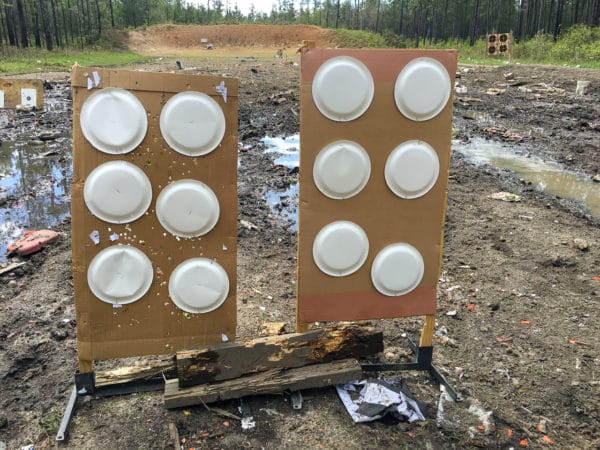
For these reasons, steel targets are great too. With no aiming point, they operate on a pass/fail basis.
Perform “Full Cycle” Shots
I start most of my individual shots from the holster or low ready position depending on the range rules. Sometimes I raise the gun to target and fire a single shot. Other times I raise the gun to target and fire multiple shots. What I don’t do is get on target, then shoot a full magazine without ever taking the sights off target. I want to get the maximum number of repetitions of bringing my sights into view and releasing an aimed shot the instant they line up with my intended target. Much of the time duration between holster and hole in the target, for me at least, is getting the proper sight picture, so I practice that element—a lot.
There’s a counter-intuitive detail to this method. Practice the raise sights and fire routine slowly at first, focusing on consistent and perfect technique. Don’t allow your sights to go above the target so you have to bring them back down. If you do the Karate Kid method of slow repetitions, you’ll be surprised at how fast you can draw and place an accurate shot later.
Shift Targets with Every Shot, Then Randomize
I also like to move my shots around on one or more targets. If your range conditions allow, set up two or three targets and alternate between them randomly. That gets you extra sight transition practice. If you shoot at an indoor range and have only one target, shoot at different zones on that single paper. Force yourself to go high right, then low left for example. Again, your “groups” will look like hell, but you’ll be building valuable transition skills.

The most important takeaway, at least for me, of this change in practice approach is that my real-life goal isn’t to shoot small groups leisurely. I doubt many hyped-up attackers would be impressed by that. My goal is to be able to use my handgun more effectively, and that requires a difference in thinking as to what defines success.
About
Tom McHale is the author of the Practical Guides book series that guides new and experienced shooters alike in a fun, approachable, and practical way. His books are available in print and eBook format on Amazon. You can also find him on Facebook, Twitter, Instagram and Pinterest.
